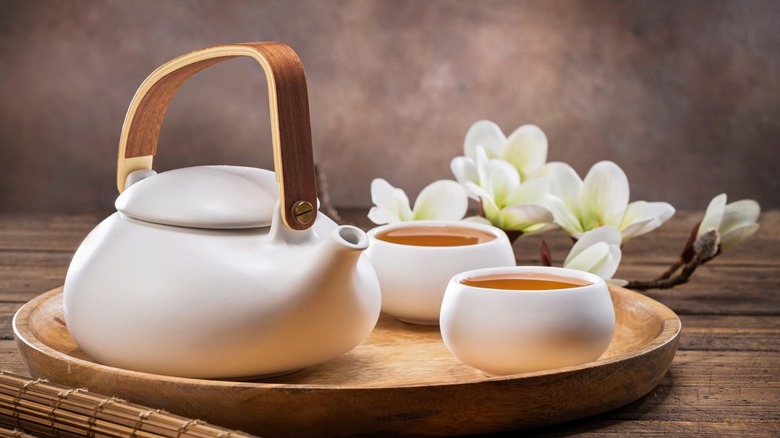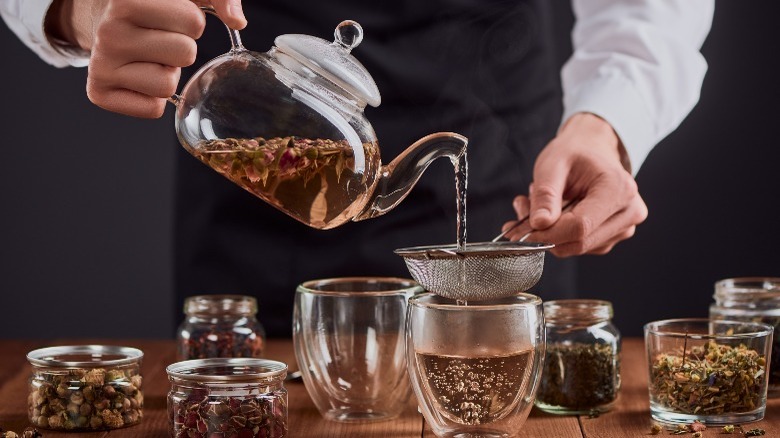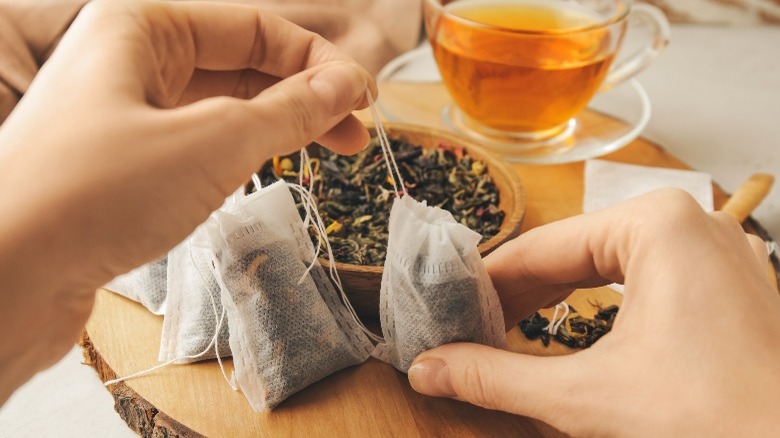How A Happy Accident Became What We Know As The Modern Teabag
One of the most popular drinks in the world today is tea. According to the Mark T. Wendell Tea Company, drinking tea originated in China around 2750 B.C. and was originally used for medicinal purposes. Eventually tea went from being used purely as medicine to being consumed for pleasure as well. Over its long history, its use would expand beyond China and spread across the globe.
Though it has its roots in China, tea began getting shipped around the world during the 17th century when the Dutch began exporting it to Europe. There it became insanely popular, especially in countries like England and the early American colonies. Tea became the beverage of choice, and over time, people began to consume it in ways that were different from the original Chinese brewing methods. However, the most common way that we consume tea today — by way of convenient wee bags — may have been discovered completely by accident.
Original brewing and drinking process
According to legend, tea was discovered by Chinese Emperor Shen Nung when a breeze blew a few leaves from a tea tree into his pot of boiling water (per Mark T. Wendell Tea Company). Because he enjoyed the taste and the reported health benefits, he ordered that the plant be cultivated and encouraged his people to drink it. The original method of taking the tea leaves and boiling them did produce a drinkable tea, but it was likely more bitter than more modern versions.
Over the centuries, how tea was grown and consumed began to change. In modern times, black tea leaves are now generally put through a four-step process to get them ready for consumption. Today tea leaves must now be withered — the first reduction in moisture content — rolled, fermented, and dried (per Britannica). But it was the possibly accidental invention of the teabag in the early 20th century that really changed the tea brewing game.
A happy accident
There are a couple of competing stories about who first invented the teabag (per Smithsonian Magazine). We know that Roberta C. Lawson and Mary Molaren of Milwaukee, Wisconsin, designed a "tea leaf holder" and submitted it for a patent in 1901. With their invention, they had solved the problem of having to make an entire pot of tea, if you only wanted a single cup. Their patented mesh bag would keep the tea leaves from floating around your cup, thus avoiding spoiling your drink. Nor was the rest of a pot of tea wasted for the sake of enjoying just one serving.
The other story that may have started the use of tea bags is believed to have happened more or less by accident in 1908. As reported on Today I Found Out, a tea merchant named Thomas Sullivan began distributing his tea samples in small silk pouches as a way of encouraging sales. However, his customers soon realized how easy it was to keep the tea in the bag and brew the tea without having to be bothered with loose tea leaves. Sullivan initially began selling the loose leaf tea again without the silk bags and his customers had a fit. As a smart businessman Sullivan reinstated the use of the bags and orders for his tea began pouring in.
The whole truth about which people came up with the idea for the teabag may never be known. Suffice to say that by the late 1950s, even the English began to use teabags for their hot cuppa.


